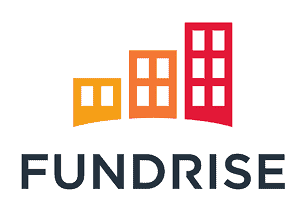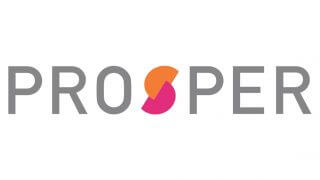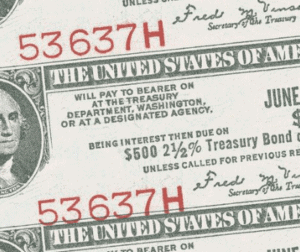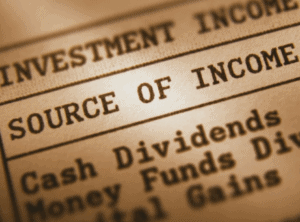Unsecured Bonds – How to Analyze, Compare, and Invest in Unsecured Bonds
Understanding how different bond types work can be challenging. You’ve got everything from corporate bonds, government bonds, and municipal bonds, with the risks and rewards varying depending on the issuer. With that said, each bond type will have one of two characteristics; it will either be secured or unsecured.
In a nutshell, unsecured bonds are not backed by an asset. This means that were the issuer to default on its obligations, you might lose your investment in full. In return for the increased risks, you as an investor should expect to receive more attractive interest payments.
In this article, we explore the ins and outs of how unsecured bonds work, and how they compare to their ‘secured’ counterparts. We’ll also give you some handy tips on what you need to look out for when choosing an unsecured bond investment.
Featured Bonds Broker 2020 The lender would initially be required to perform due diligence on you as an applicant, with the view of assessing your creditworthiness. The specific interest rate that you pay on the loan would then be determined by your financial standing. Crucially, as unsecured personal loans do not require collateral, the loan itself isn’t backed by an asset. This is exactly how an unsecured bond works. For example, the specific interest rate that you are paid on the bond investment will depend on the issuer’s creditworthiness and financial standing. Similarly, if the issuer were to default on the loan, you might lose your investment in its entirety because the bond isn’t backed by an asset. Although this increases the risks of the investment, unsecured bonds typically pay a much higher rate of interest in comparison to secured bonds. As such, they might only be suitable if you have a higher appetite for risk. In terms of the specifics, both unsecured and secured bonds work largely the same. For example, you will be paid a fixed rate of interest for the duration of the term. This might be a 10-year maturity term that pays a coupon rate of 4%, meaning that you would earn $40 for every $1,000 bond you hold. Unsecured bonds will also come with a running yield. This means that the value of the bond will go up and down on the secondary markets, in-line with the financial health of the issuer. To help you understand further, let’s look at a quick example of how an unsecured bond investment might work in practice. The above example highlights that the unsecured bond investment process remains much the same as secured bonds. By this, we mean that you are able to make a fixed rate of interest until the bonds mature, which is ideal for those of you that wish to earn passive income. You might be surprised to learn that most bond types active in the financial markets are unsecured. As we explain in more detail further down, this includes all US Treasury bonds and most corporate and municipal bonds. With that said, it makes sense for us to explore what a ‘secured’ bond is first, as this particular bond type is rarer than its unsecured counterpart. The main characteristic of a secured bond is that it is secured by an asset. For example, let’s take an airline company that wishes to raise capital to fund a new fleet of planes. If the airline company in question has a less than ideal credit rating, or its debts have reached uncomfortable levels, it might be forced to issue secured bonds. This means that the bonds might be backed by its current fleet of planes. As a bondholder, this gives you a significant amount of security on your investment. This is because were the airline company to default on its coupon or principal payments, you would have a legal right to the underlying asset. In this example, the airline company would be forced to sell its assets (planes) to cover the outstanding debt that it owes to bondholders. In return for this additional layer of security, secured bondholders should expect a much lower coupon rate. This is much the same as a secured loan, such as a homeowners loan, whereby lenders will typically offer more favourable APR rates, as they have the security of your asset as collateral. This is why the coupon rate and running yield on corporate bonds can vary so widely. For example, bonds recently issued by Apple came with a coupon rate of 3%. The return for bondholders is low because Apple has an excellent financial standing and cash reserves that exceed $200 billion. At the other end of the spectrum, UK-based Yorkshire Building Society currently has bonds in circulation that come with a coupon rate of 13.5%. This is because the risk of default is much higher in comparison to a financially strong entity like Apple. With that said, although there is a wide disparity in the risks and rewards of Apple of Yorkshire Building Society; the bonds have one thing in common, they are both unsecured. As such, if either company defaulted on its bond obligations, you could lose your investment in full. If you were surprised to learn that most corporate bonds are not backed by an asset, you’ll likely be even more surprised to learn than all US Treasury bonds are unsecured. After all, US Treasury bonds are often viewed as the most secure and risk-averse asset class in the financial markets. This is because the bonds are backed by the Federal Reserve, meaning that the US government can simply print more money to cover a shortfall in cash reserves. Similarly, it can also resort to an increase in federal tax rates. But, US Treasury bonds are still issued in an unsecured manner, as they are backed by nothing more than trust. In other words, if the US government were to one-day collapse, you as a bondholder would not be entitled to anything. However, the likelihood of this happening is virtually non-existent, so unsecured Treasuries arguably come with less risk than secured corporate bonds. It’s not just US Treasury bonds that are unsecured. All government bonds, whether they were issued by a strong economy like the UK, Germany, or Japan, or an emerging nation like Kenya or Brazil, are based on nothing more than trust. Things start to get a bit more confusing in the case of municipal bonds, as the security on your investment will vary from bond-to-bond. Before we get to that, let’s make sure that we know what a municipal bond actually is, as this relates directly to whether or not your investment is secured or unsecured. In terms of what happens to your investment if the municipal bond issuer defaults, this will depend on whether the bonds are “general obligation bonds” or “revenue bonds”. In the case of general obligation bonds, the bonds are not secured or backed by any assets. As the name suggests, they are instead backed by an “obligation to pay”, meaning that the agreement is based on trust. In a worst-case scenario event, you would not be entitled to anything if the state, city, or county defaulted. By issuing revenue bonds, the state has an obligation to pay investors annual or bi-annual coupon payments, and then the full principal amount once the bonds mature. Investors have an element of protection on the bonds, as they are backed by any revenues generated from the highway toll. This means that were the state of Maine to default on the bonds, investors would have a much better chance of recouping their money. However, this is not a surefire guarantee, as if revenues on the highway toll dry-up, or do not exist at all because the project is yet to be completed, bondholders could still lose out. The bond space is somewhat unusual in the context of secured/unsecured securities. In the case of traditional financing markets, secured loans are viewed as more risk-averse than unsecured loans. This makes sense, as the lender has the safety-net of your assets, such as a property or vehicle. However, the opposite is often true in the case of the bonds. For example, although US Treasury bonds are secured by nothing more than trust, they are significantly less risky than secured corporate bonds, Unsecured Treasury Bonds: Secured Corporate Bonds As you can see from the above two examples, unsecured bonds are often less risky than secured bonds. Interestingly, this is also the case when comparing corporate bonds. Think of it like this; which company do you think has a better credit rating and stronger financial standing – those issuing secured bonds or unsecured bonds? It’s the latter because those issuing secured bonds often have to do so because they have a weak balance sheet. On the contrary, strong companies like Apple, Nike, Disney, and General Motors can issue unsecured bonds as they have an excellent financial standing. Although unsecured bonds are often viewed as less risky than secured bonds, your money is never 100% safe. As such, it’s important that you mitigate the risks of your investment as best as possible. The most effective way of doing this is to diversify with a portfolio that contains bonds from heaps of issuers from multiple markets, industries, and economies. For example, you might have a bond basket that contains 70% in US Treasuries, with the remaining made up of corporate bonds. You would want your corporate bonds to come from dozens, if not hundreds of individual companies. This way, were a bond issuer to default, you wouldn’t feel the impact anywhere near as much had you invested in a single entity. Your diversified unsecured bond portfolio should also take into account the creditworthiness of the issuer. The likes of Standard’s and Poors, a globally recognized credit rating agency, will often assign unsecured bonds a rating. This starts with a rating of ‘AAA’ for high-grade bonds, right down to ‘D’ for those that have previously run into default. If you’ve read our guide up to this point, you should know have a firm grasp of how unsecured bonds work, and whether or not they fit with your long-term investment goals. If they do and you wish to make an investment today, we have outlined a simple step-by-step guide. The specifics will vary depending on the type of unsecured bond you wish to buy. If you want to buy unsecured bonds that were issued by a publically-listed company, you’ll need to use a third-party broker. Companies issue corporate bonds directly to the institutional space. This means that a broker will purchase a fixed number of bonds on behalf of its clients, which then allows you to buy smaller amounts. As such, you’ll need to find a broker that lists the specific corporate bonds that you wish to invest in. As is the case with all online brokers, you will need to open an account. You’ll be asked to enter a range of personal information, such as your full name, home address, date of birth, social security number, and contact details. You’ll also need to provide information about your employer and income. Before you can deposit funds, you’ll need to verify your identity. Most brokers will ask you to upload a clear copy of your government-issued ID, and a proof of address. You’ll need to deposit some funds before you can purchase your chosen unsecured corporate bonds. The specific payment method will depend on the broker itself. Some support bank transfers, while others allow you to deposit via a debit/credit card or e-wallet. Once your account is funded, you can then buy your chosen bonds. Once you do, you will be entitled to fixed interest payments, which is usually distributed by the issuer every 6 or 12 months. These payments will continue until the bonds mature. At the end of the term, you will receive your original investment back in full, which will be credited into your brokerage account. If you’re more interested in adding unsecured US Treasuries to your bond portfolio, you can do this by making the purchase directly with the Treasury Direct website. The process works largely the same as using an online broker. If you’ve got a slightly higher appetite for risk and you wish to buy unsecured municipal bonds, you’ll also need to use a third-party broker. By reading our guide all of the way through, we hope that you now know how unsecured bonds work. You should have a good understanding of how they differ to secured bonds, and how this will impact the security of your investment. As we have discussed throughout our guide, unsecured bonds are often viewed as more risk-averse in comparison to secured bonds. Although it is true that secured bonds are backed by an asset, issuers are required to do this because their creditworthiness is less than ideal. On the contrary, unsecured bonds are based purely on trust. If you do decide to invest in unsecured bonds, just make sure that you diversify as best as possible. This will allow you to mitigate your losses in the unlikely event of a default. Featured Bonds Broker 2020 Unsecured bonds are not backed by an asset. This means that were the issuer to default, you could lose your entire investment The vast majority of the multi-trillion dollar bond space is dominated by unsecured bonds. This includes all US Treasuries and most corporate and municipal bonds. This depends on the issuer. For example, the US government can increase taxes or simply print more money to cover its bond obligations. A company might decide to take on more debt or issue shares. Although US Treasuries are often viewed as one of the safest investments available, they are still unsecured. This is because the bonds are backed by nothing more than trust. Revenue bonds are issued by states, cities, or regions via municipal bonds. They are secured bonds because they are backed by revenues attached to a particular project or source. General obligation bonds are unsecured bonds. As the name suggests, the issuer has an obligation to repay its investors. Kane holds academic qualifications in the finance and financial investigation fields. With a passion for all-things finance, he currently writes for a number of online publications. WARNING: The content on this site should not be considered investment advice. Investing is speculative. When investing your capital is at risk. This site is not intended for use in jurisdictions in which the trading or investments described are prohibited and should only be used by such persons and in such ways as are legally permitted. Your investment may not qualify for investor protection in your country or state of residence, so please conduct your own due diligence. Contracts for Difference (“CFDs”) are leveraged products and carry a significant risk of loss to your capital. Please ensure you fully understand the risks and seek independent advice. This website is free for you to use but we may receive commission from the companies we feature on this site. Copyright © 2025 | Learnbonds.com






What is an Unsecured Bond?
 In its most basic form, an unsecured bond is a bond instrument that is not backed by an asset. On the contrary, the financing agreement is based on trust. The easiest way to get your head around an unsecured bond is to look at how traditional loans work. For example, let’s say that you were to take out a $10,000 personal loan.
In its most basic form, an unsecured bond is a bond instrument that is not backed by an asset. On the contrary, the financing agreement is based on trust. The easiest way to get your head around an unsecured bond is to look at how traditional loans work. For example, let’s say that you were to take out a $10,000 personal loan. How do Unsecured Bonds Work?
What Bond Types are Unsecured?
Secured Bonds
Unsecured Corporate Bonds
 In the vast majority of cases, when companies issue corporate bonds they will do so via unsecured security. In Layman’s Terms, this means that the bonds are backed by nothing more than trust. This can surprise newbie investors, as there is often a misconception that the bonds are backed by the company’s assets. However, this is only the case if the bonds are secured.
In the vast majority of cases, when companies issue corporate bonds they will do so via unsecured security. In Layman’s Terms, this means that the bonds are backed by nothing more than trust. This can surprise newbie investors, as there is often a misconception that the bonds are backed by the company’s assets. However, this is only the case if the bonds are secured.
Unsecured US Treasury Bonds
Municipal Bonds – Secured or Unsecured?
General Obligation Bonds
Revenue Bonds
 Some municipal bonds are issued as revenue bonds. Once again, the bonds are not backed by the federal government. However, the bonds are actually secured by the revenues generated from a specific source. For example, let’s say that the state of Maine wishes to raise $400 million to fund a new highway toll.
Some municipal bonds are issued as revenue bonds. Once again, the bonds are not backed by the federal government. However, the bonds are actually secured by the revenues generated from a specific source. For example, let’s say that the state of Maine wishes to raise $400 million to fund a new highway toll.Unsecured Bonds vs Secured Bonds
How to Reduce the Risks of Unsecured Bonds?
How to Buy Unsecured Bonds: Step-by-Step Tutorial
How to Buy Unsecured Corporate Bonds
Step 1: Choose a Broker
Step 2: Open an Account and Verify Your Identity
Step 3: Deposit Funds
Step 4: Purchase Unsecured Bonds and Enjoy Passive Income
How to Buy Unsecured Treasury Bonds
How to Buy Unsecured Municipal Bonds
Conclusion


FAQs
What is an unsecured bond?
What types of bonds are unsecured?
What happens if the issuer defaults on unsecured bonds?
Why are US Treasuries unsecured bonds?
What are revenue bonds?
What are general obligation bonds?
See Our Full Range Of Bonds Resources – Bonds A-Z
Kane Pepi


